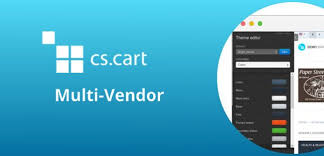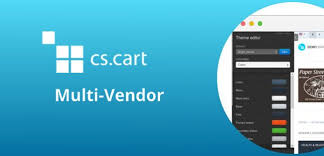If you’ve ever wanted to build a website on your own, Concrete5 may be the perfect tool for you. This PHP CMS (Content Management System) allows users to create beautiful and functional websites without needing to learn complex coding languages. In this blog post, we’ll provide an introductory guide to Concrete5 and discuss why it might be the best choice for your next web development project.
What is Concrete5?
Concrete5 is a content management system (CMS) written in PHP. It is used to develop websites and applications. Concrete5 can be installed on a web server or a local computer.
Advantages of Using Concrete5
Concrete5 is a popular open source content management system (CMS) written in PHP. It is known for its ease of use and flexibility. In this article, we will take a look at some of the advantages of using Concrete5 for your next PHP CMS project.
Ease of Use : One of the main advantages of using Concrete5 is its ease of use. The user interface is very intuitive and easy to use. Even if you are not a technical person, you should be able to use Concrete5 without any problems.
Flexibility : Another great advantage of Concrete5 is its flexibility. You can easily extend its functionality by installing add-ons or themes. If you need a specific functionality that is not available out-of-the-box, chances are there is an add-on or theme that provides it.
Open Source : Concrete5 is an open source project, which means that it is free to use and distribute. You can also contribute to the development of Concrete5 if you want. This makes it a great choice for those who want to get involved in the development process of their CMS.
Install and Setup Concrete5
Installing Concrete5 is a simple, straightforward process. The first thing you need to do is download the latest version of the software from the official website. Once you have the ZIP file, extract it to a folder on your computer.
Next, open up your preferred text editor and create a new file called “config/database.php”. In this file, you will need to enter your database connection information. Concrete5 uses MySQL by default, so be sure to use the correct credentials for your database server.
Once you have saved the database configuration file, open up a web browser and navigate to the location where you extracted the Concrete5 files. You should see a screen asking you to set up your site. Follow the prompts and fill in the required information. When you are finished, click on the “Install” button.
Concrete5 is now installed and ready to use!
Basic Concepts for Developing with Concrete5
There are a few basic concepts you need to understand before you can start developing with Concrete5. First, Concrete5 is built on top of the PHP programming language. This means that all Concrete5 code is written in PHP. However, you don’t need to be a PHP expert to develop with Concrete5. The platform was designed to be easy to use for both experienced developers and those who are just getting started.
Second, Concrete5 makes use of object-oriented programming (OOP). OOP is a way of organizing code so that it is easier to reuse and maintain. If you’re not familiar with OOP, don’t worry – the Concrete5 core team has written a series of articles that will help you get up to speed.
Finally, Concrete5 uses the Model-View-Controller (MVC) framework. MVC is a popular software design pattern that helps developers create modular, reusable code. Once again, if you’re not familiar with MVC, the Concrete5 core team has written a series of articles that will help you get up to speed.
How to Create New Pages in Concrete5?
Assuming you have a basic understanding of how Concrete5 works, let’s move on to creating new pages. This is actually very simple to do.
In your site’s dashboard, go to the Pages section and click on the “Add Page” button. You will be presented with a form where you can enter the page name, description, and other properties.
Once you’re done with that, click on the “Save” button and your new page will be created. You can now start adding content to it just like you would any other page.
If you want to get a bit more creative, you can also add custom templates or blocks to your new pages. This is beyond the scope of this article, butConcrete5’s documentation has all the information you need to get started with that.
Customizing with the Theme Cheat Sheet
If you’re just getting started with Concrete, or any PHP CMS development for that matter, one of the first things you need to learn is how to customize your themes. The Theme Cheat Sheet is a great resource for this.
In the Theme Cheat Sheet, you’ll find all of the different template files that make up a Concrete theme, as well as a description of what each file does. This is essential information for anyone looking to customize their own theme.
Once you have a good understanding of the template files and what they do, you can start making changes to your theme to better suit your needs. For example, if you want to add a new widget area to your sidebar, you can edit the sidebar.php file and add the necessary code.
Making changes to yourtheme doesn’t have to be difficult or time-consuming. With the Theme Cheat Sheet, you can quickly and easily make the changes you need without having to wade through tons of documentation. So if you’re ready to start customizing your themes, be sure to check out the Theme Cheat Sheet!
Troubleshooting Common Issues in Concrete5 Development
If you’re just getting started with Concrete5 development, you may run into some common issues. Here’s a troubleshooting guide to help you resolve them:
Issue #1: Installation Problems
If you’re having trouble installing Concrete5, make sure your server meets the minimum requirements. Concrete5 requires PHP 5.3 or higher and MySQL 5.0 or higher. If you’re using an older version of PHP or MySQL, you’ll need to upgrade before you can install Concrete5.
Once you’ve confirmed that your server meets the minimum requirements, double-check that the database connection settings in your configuration file are correct. If they’re not, Concrete5 will be unable to connect to your database and installation will fail.
If you’re still having trouble installing Concrete5, post a message on the support forums and someone from the community will be happy to help.
Issue #2: Permissions Problems
If you’re seeing “access denied” errors or other permissions problems when trying to access certain areas of the back end, it’s likely that your file permissions are not set correctly. By default, all files and directories in a Concrete5 installation should be owned by the web server user (usually “www-data” or “httpd”) and have group ownership set to the web server group (usually “www-data” or “httpd”).

Conclusion
We hope this article gave you a good overview of the Concrete5 CMS and what it offers for developers looking to build powerful web applications. With its easy-to-use interface, intuitive tools, and extensive library of addons, Concrete5 is a great choice for those who want to get started with developing content management systems quickly. So if you’re ready to take the plunge into PHP development using Concrete5, don’t wait any longer – get out there and start building!
FAQs
Q. How do you install concrete CMS?
Installing concrete CMS is easy and straightforward. First, you need to download the concrete CMS package from the official website. Once it’s downloaded, extract the files and move them to your server’s root directory. After that, open up your browser and go to the URL of your server’s root directory and follow the onscreen instructions.



